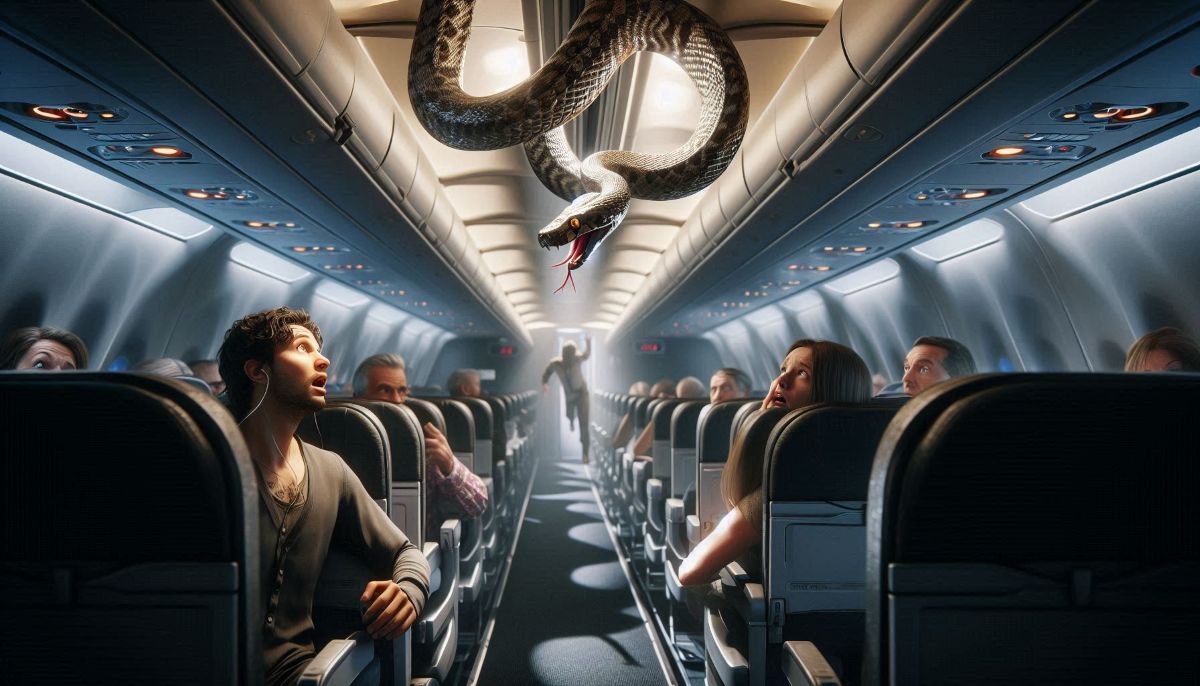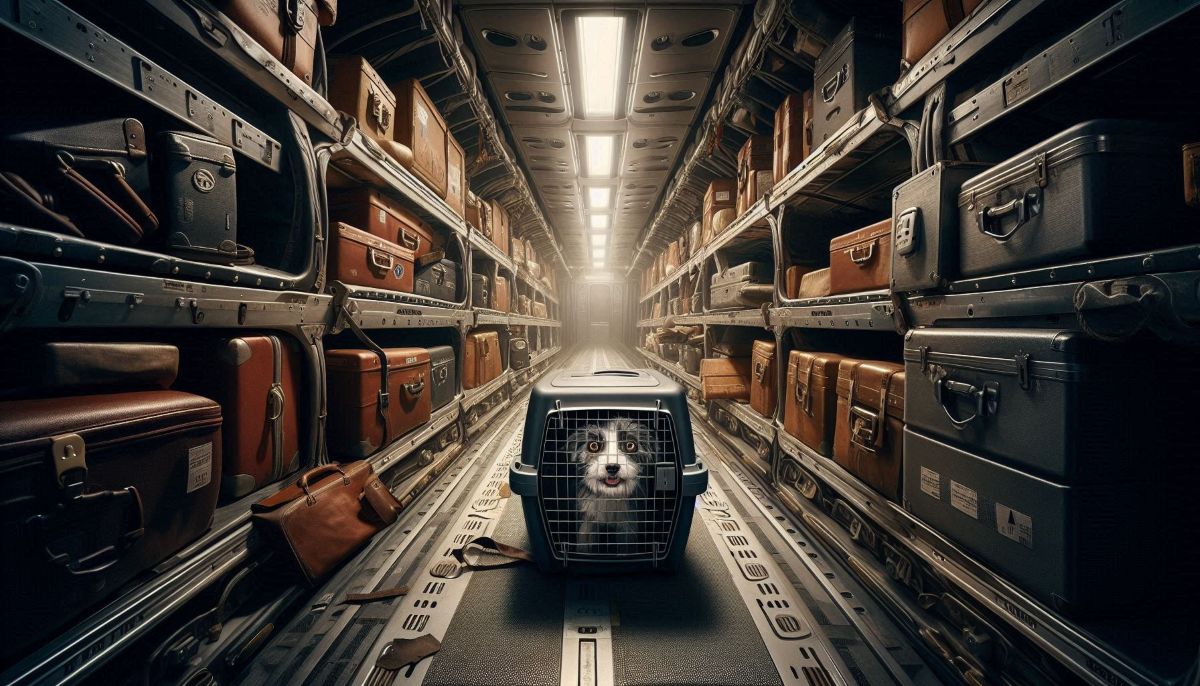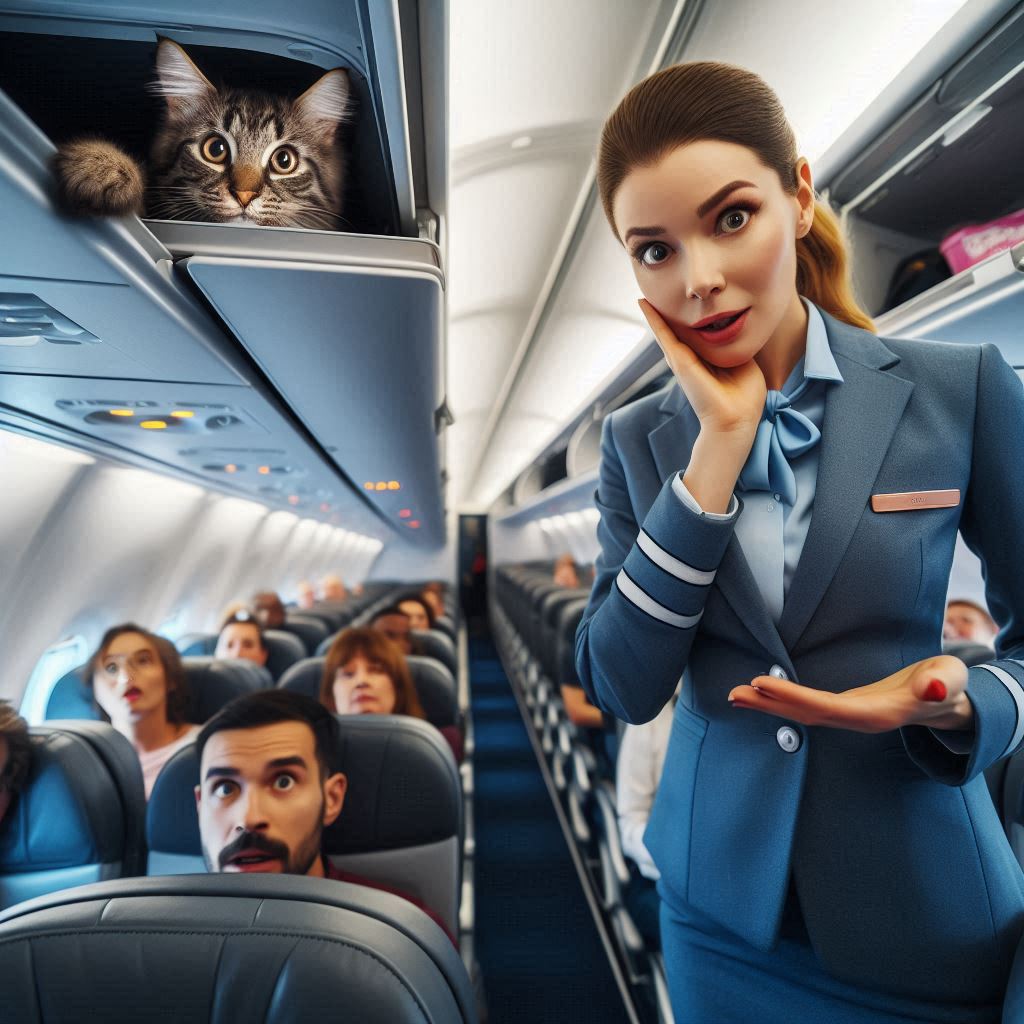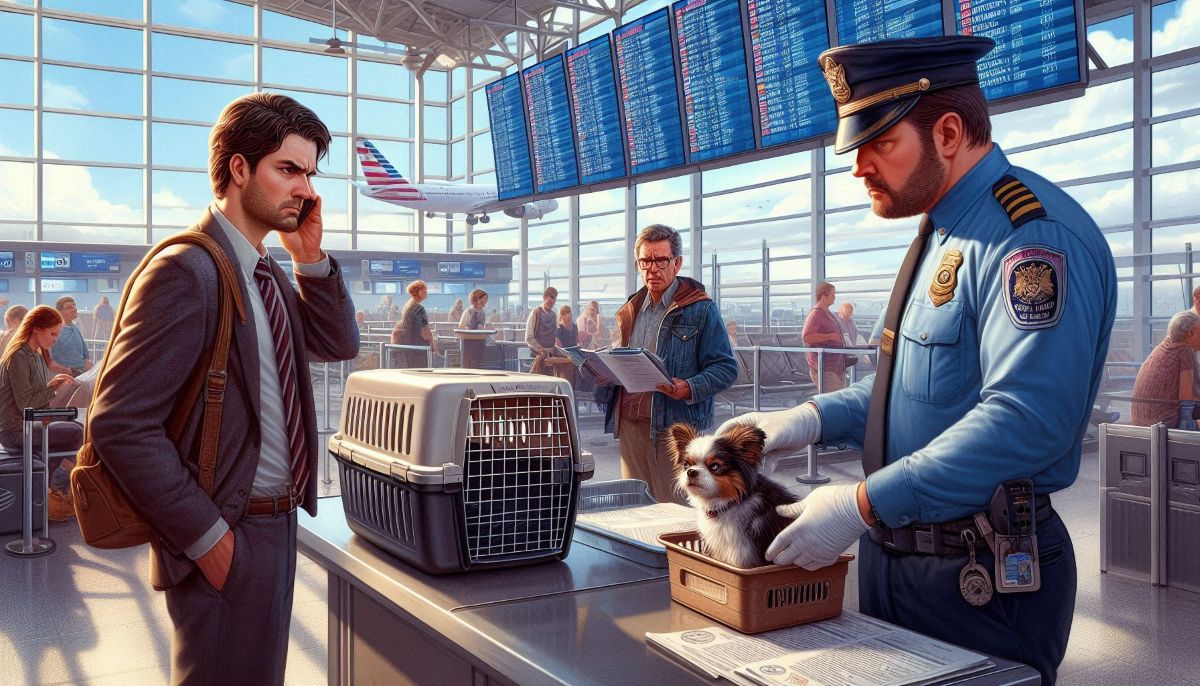
Watch short for this article (5 slides)
Cleared for Takeoff? The Growing Challenge of Animals on Airplanes
From cats discovered hiding in cockpits to scorpions stinging passengers mid-flight, incidents involving animals—both domestic and wild—on commercial aircraft are capturing headlines and raising significant concerns. While sometimes amusing, these encounters often disrupt schedules, create safety hazards, and highlight the complex challenge airlines face in balancing passenger desires with the paramount need for safety and order in the skies. This article delves into the various ways animals end up on planes, the concrete risks they pose, the evolving regulations governing animal transport, and how airlines and passengers can navigate this increasingly common issue.

Not All Animals Are Equal Passengers: Defining Roles & Regulations
Understanding the different categories of animals potentially found on planes is crucial, as regulations vary significantly:
- Service Animals (Primarily Dogs): Defined by the U.S. Department of Transportation (DOT) under the Air Carrier Access Act (ACAA) as dogs, regardless of breed or type, individually trained to do work or perform tasks for the benefit of a qualified individual with a disability, including a physical, sensory, psychiatric, intellectual, or other mental disability. Airlines are generally required to permit trained service dogs to accompany their handlers in the cabin, free of charge, provided they meet specific documentation and behavior requirements. (DOT - Service Animals Information)
- Emotional Support Animals (ESAs): Following widespread controversy and concerns about abuse of the system, the DOT significantly revised its rules in late 2020. Airlines are **no longer required** to recognize ESAs as distinct from regular pets. Most major airlines now classify ESAs under their standard pet policies. This change addressed issues where passengers attempted to bring untrained or unusual animals (like peacocks, squirrels, pigs) onboard under the guise of emotional support.
- Pets in Cabin (PETC): Small domestic animals (typically cats and dogs, sometimes rabbits or household birds) allowed to travel in the cabin under the seat in front of the passenger, inside an approved carrier. Strict size and weight limits apply, fees are charged, and reservations are usually required as airlines limit the number of pets per flight.
- Pets/Animals as Cargo: Animals transported in the temperature and pressure-controlled cargo hold. This is typically required for larger pets or when cabin space is unavailable. Specific crate requirements, health certificates, and often temperature restrictions apply. This category also includes commercially shipped animals or zoo animals.
- Unintended Wildlife/Stowaways: Animals that enter the aircraft accidentally (e.g., rodents, birds, insects) during ground operations.
How Do Unexpected Animal Guests Arrive Onboard?

Animal disruptions stem from various sources, ranging from deliberate actions to accidental intrusions:
- Non-Compliant Pet Transport Attempts: Passengers may try to circumvent airline rules due to:
- Cost Avoidance: Attempting to avoid pet fees, which can be substantial (often $100-$200+ each way).
- Size/Breed Restrictions: Trying to bring animals that exceed cabin limits or belong to restricted breeds (e.g., brachycephalic/short-nosed dogs often banned from cargo due to respiratory risks).
- Lack of Documentation: Failing to obtain required health certificates or vaccination records, especially for international travel.
- Misunderstanding Rules: Genuinely not understanding the distinction between service animals and pets, or the specific requirements for each.
- Example: The cat found aboard a Turkish Airlines flight likely involved a passenger attempting to avoid declaration and fees, leading to delays upon discovery.
- Wildlife Intrusion During Ground Operations: Aircraft spend considerable time on the ground with doors open for catering, cleaning, baggage handling, and maintenance. This creates opportunities for:
- Rodents (Mice, Rats): Attracted by potential food sources or seeking shelter, they can enter cargo holds or even cabins.
- Birds: Can fly into open cabin or cargo doors, especially in open-air hangar environments or warmer climates.
- Insects: Spiders, scorpions (as in the Canadian flight incident), or other insects native to the departure airport environment can inadvertently be carried aboard on luggage, cargo, or equipment, or crawl in directly.
- Stray Animals: Rarely, stray cats or small dogs have entered aircraft unnoticed at certain airports.
- Past ESA Controversies and Current Disputes: While DOT rules changed, disputes can still arise regarding legitimate service animals versus pets, or passengers attempting to push boundaries. The infamous case of the passenger denied boarding with an "emotional support peacock" highlighted the extreme end of attempts to bring unsuitable animals onboard before the rule changes took effect.
- Cargo Hold Escapes (Rare): Although uncommon due to required secure containers, damage to a crate or improper latching could potentially allow an animal being transported in the hold to escape, either within the hold itself or, in extremely rare scenarios, potentially finding access to other parts of the aircraft through service panels or ducting (highly unlikely but theoretically possible for small, agile animals).
More Than Just an Inconvenience: Safety Risks and Operational Impacts

Unexpected animals in the cabin or loose in the aircraft pose genuine risks:
- Safety Hazards During Critical Flight Phases: An animal loose during takeoff or landing could startle pilots, interfere with controls if it accessed the cockpit (highly unlikely but a catastrophic theoretical risk), or obstruct emergency exits. Flight attendants need to remain focused on safety duties, not animal wrangling.
- Passenger and Crew Safety:
- Bites/Scratches: A frightened, stressed, or defensive animal (pet or wildlife) may bite or scratch passengers or crew, requiring medical attention and potentially causing infections.
- Allergic Reactions: Many passengers have severe allergies to animal dander, feathers, or saliva. The enclosed environment and recirculated air can trigger reactions ranging from mild discomfort to severe respiratory distress or anaphylaxis, constituting a medical emergency.
- Venomous Bites/Stings: Incidents like scorpion stings require immediate medical assessment and potential diversion.
- Panic/Disruption: Sightings of certain animals (snakes, rats, scorpions) can cause passenger panic, potentially leading to unsafe movements within the cabin.
- Zoonotic Disease Transmission: While the risk is generally low in a flight context, animals can carry diseases transmissible to humans. Bites or contact with animal waste pose theoretical risks.
- Operational Disruptions and Costs:
- Delays: Capturing a loose animal, addressing medical needs, performing required safety checks, and cleaning can cause significant ground delays or require costly flight diversions. The snake found mid-flight over Mexico necessitated an emergency landing/priority handling.
- Aircraft Damage: Rodents could potentially chew on wiring or other components, requiring thorough inspections and repairs.
- Cleaning and Sanitation: Animal waste or allergens require specialized cleaning.
- Animal Welfare Concerns: The aircraft environment (noise, pressure changes, confinement) is stressful for animals. Escaped or improperly secured animals risk injury, extreme stress, or becoming lost.
"Safety is the number one priority in aviation. Any uncontrolled variable, whether it's severe weather or an unexpected animal in the cabin, presents a potential risk that must be managed immediately and effectively by the crew and airline operations." - Aviation Safety Analyst perspective (synthesized).
Airline Policies and Industry Adaptations
In response to these challenges, airlines and regulators have tightened procedures:
- Strict Enforcement of Pet Policies: Airlines rigorously enforce rules regarding advance booking, carrier specifications (size, ventilation, secure latches - often compliant with IATA Live Animals Regulations guidelines), fees, and required documentation (health certificates, rabies vaccinations). Failure to comply typically results in denial of boarding for the pet.
- Clear Definition and Handling of Service Animals: Following the DOT rule changes, airlines require specific forms attesting to a dog's health, training, and behavior, and reserve the right to deny transport if the animal exhibits aggressive or disruptive behavior. They focus on ensuring the animal is task-trained for a disability.
- Bans on Certain Animals: Most airlines explicitly ban certain animals from the cabin and often cargo, including large primates, rodents (other than perhaps small, contained pets like hamsters on some carriers), snakes, spiders, reptiles (other than small, contained pets on some carriers), and animals with tusks or horns.
- Enhanced Ground Operations Procedures: Efforts are made to minimize wildlife intrusion, such as keeping doors closed when possible, inspecting catering equipment, and potentially using pest control measures around terminals and ground equipment, although this remains a challenge.
- Improved Cargo Handling and Monitoring: Stricter checks on the security of animal crates before loading, adherence to temperature regulations, and protocols for handling animals during transit aim to prevent escapes and ensure welfare.
- Crew Training: Flight crews receive training on handling various in-flight situations, including procedures for dealing with disruptive passengers, medical emergencies (which could stem from animal encounters), and identifying and reporting safety hazards, which includes unexpected animals.
Responsible Air Travel with Animals: A Passenger Guide

Passengers planning to travel with animals must take responsibility:
- Service Animal Handlers: Understand and comply with airline requirements regarding documentation (DOT forms), ensure your dog is impeccably trained for public access and task performance, and be prepared for your dog to remain under your control at all times, typically on the floor space.
- Pet Owners:
- Research Thoroughly: Check the *specific* pet policy of the airline you intend to fly *before* booking your ticket. Rules vary significantly.
- Book Early: Reserve a spot for your pet in the cabin as soon as possible, as space is limited.
- Get the Right Carrier: Purchase an airline-compliant carrier that fits the dimensions specified, is well-ventilated, leak-proof, and allows your pet to stand up and turn around comfortably.
- Visit the Vet: Obtain necessary health certificates (often required within 10 days of travel), ensure vaccinations are current, and discuss travel anxiety management options if needed.
- Acclimatize Your Pet: Get your pet used to the carrier well before the flight.
- Never Attempt to Sneak a Pet: The risks of discovery, fines, denial of boarding, and potential harm to your pet are not worth it.
- Consider Alternatives: For anxious pets, large animals, or long flights, consider pet ground transportation services or leaving your pet with a trusted sitter.
Conclusion: Maintaining Safety and Sanity at 30,000 Feet
Animals and airplanes can be a challenging mix. While legitimate service animals provide invaluable assistance and pets offer companionship, the confined, high-stress environment of an aircraft cabin demands strict adherence to rules designed for the safety and well-being of everyone onboard—human and animal alike. Airlines continue to refine policies to prevent disruptions from wildlife stowaways and non-compliant pet transport while accommodating passengers with legitimate needs. Ultimately, passenger awareness, honesty, and responsible planning are essential to ensure that unexpected animal encounters remain rare anecdotes rather than common threats to aviation safety and efficiency.